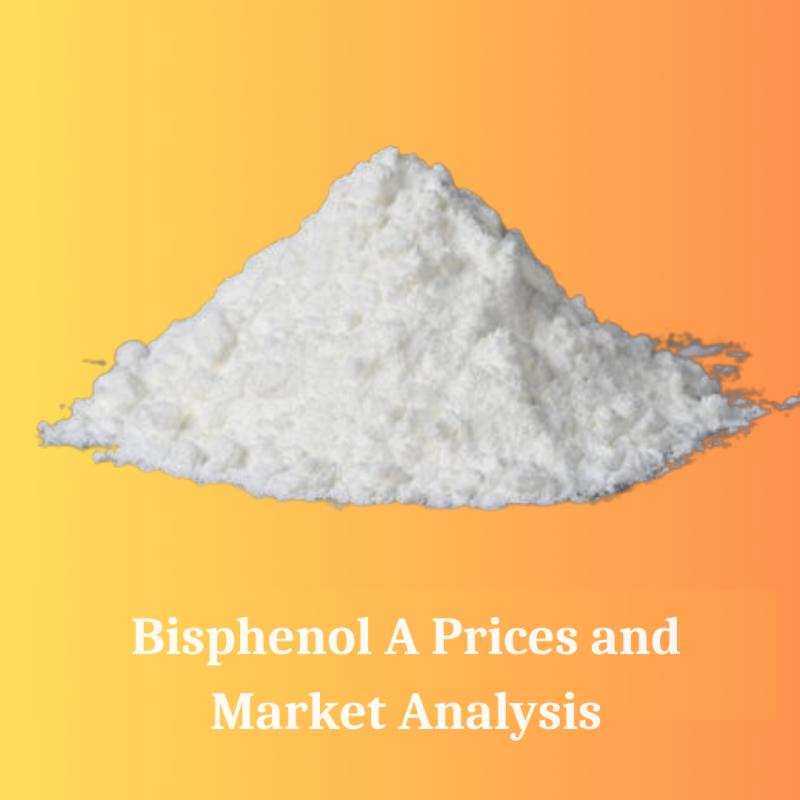Bisphenol A Prices in 2025: Trends, Forecasts, and Industry Insights

Bisphenol A (BPA) is a chemical compound widely used in
manufacturing plastics and resins, especially polycarbonate plastics and epoxy
resins. These materials are crucial in the production of a wide range of
consumer goods, such as food and beverage containers, electronics, automotive
parts, and medical devices. Because of its extensive use in everyday items, BPA
plays a significant role in the global market for chemicals. In recent years,
there has been growing concern about the safety of BPA, which has impacted its
demand and price. As we look into 2025, it’s important to understand the
factors influencing BPA prices, the market trends, and the forecast for the
industry.
>> Get Real-time Bisphenol
A market Prices, trends, forecast and market analysis: https://tinyurl.com/2wmppd7w
Current Market Situation
As of now, Bisphenol A prices
have been subject to fluctuations due to various factors such as raw material
costs, government regulations, and supply-demand imbalances. The global BPA
market has been experiencing a slow but steady recovery from the impact of the
COVID-19 pandemic, which disrupted supply chains and reduced industrial
activities. However, with the increase in manufacturing activities worldwide
and growing demand in several industries, BPA prices have been gradually
rising.
A major element impacting the price of BPA is the cost of
its raw materials, particularly phenol and acetone. These two chemicals are
essential in producing BPA, and their prices directly affect the overall cost
structure of BPA production. The volatility in oil prices also plays a role, as
fluctuations in crude oil prices can drive up or down the cost of chemicals
that are derived from petroleum-based products. For instance, when crude oil
prices are high, phenol and acetone costs tend to increase, leading to higher
BPA production costs and, consequently, higher prices for consumers.
Factors Driving the Price of BPA in 2025
As we move into 2025, there are several key factors that
will continue to influence the price of Bisphenol A:
Supply Chain Challenges: Although the global supply
chain is recovering, it is still vulnerable to disruptions. Issues such as
transportation delays, logistical bottlenecks, and limited availability of key
raw materials could contribute to price increases. Furthermore, natural
disasters and geopolitical tensions can also lead to supply shortages, which
often result in price hikes.
Regulatory Pressures: BPA is increasingly under
scrutiny due to its potential health and environmental risks. Governments in
many countries, particularly in Europe and North America, are pushing for
stricter regulations regarding the use of BPA in products that come into direct
contact with food and beverages. These regulatory pressures could lead to a
reduction in demand for BPA-based products in certain industries, especially
those related to packaging. This, in turn, may affect the prices of BPA
depending on how manufacturers respond to these regulations.
Sustainability and Alternatives: Another factor
affecting BPA prices in 2025 is the growing focus on sustainability. With
environmental concerns on the rise, many companies are investing in research
and development to find alternatives to BPA. Bio-based plastics and BPA-free
resins are gaining popularity, and their market growth could lead to reduced
demand for traditional BPA. However, this transition to alternative materials
will take time, and BPA will likely remain a significant component in the
plastic industry for the foreseeable future.
Increased Demand in Emerging Markets: The demand for
BPA continues to rise in emerging markets, especially in Asia. The rapid
industrialization and urbanization in countries like China and India have led
to increased demand for consumer goods, electronics, and automotive products,
all of which rely on BPA-based materials. As a result, manufacturers in these
regions are increasingly turning to BPA as a cost-effective solution. This
growing demand from developing economies is expected to keep the price of BPA
elevated in the coming years.
Energy and Raw Material Costs: Energy prices and the
cost of raw materials also play a significant role in the pricing of Bisphenol
A. Since BPA production is energy-intensive, any changes in energy prices, such
as natural gas or electricity rates, will have a direct impact on production
costs. Likewise, fluctuations in the price of raw materials like phenol and
acetone will continue to influence the cost of BPA.
Forecast for Bisphenol A Prices in 2025
Looking ahead to 2025, the overall market for BPA is
expected to continue its upward trajectory, albeit at a moderate pace. Industry
analysts predict that the demand for BPA will remain strong due to the recovery
of the automotive, electronics, and construction sectors, all of which rely on
BPA-based materials. However, the growth of eco-friendly alternatives and
regulatory changes could limit the expansion of the BPA market in certain
regions.
While it is difficult to pinpoint an exact price for
Bisphenol A in 2025, prices are likely to increase due to a combination of
factors such as rising raw material costs, supply chain issues, and sustained
demand from industrial sectors. However, the rate of increase will largely
depend on how effectively the industry addresses sustainability concerns and
navigates regulatory pressures.
Bisphenol A prices in 2025 will be influenced by a range of
factors, including the recovery of the global economy, raw material costs, and
the growing push for more sustainable practices. To get real time commodity
price update with pricewatch. While
the BPA market is likely to see moderate price increases, the shift toward
alternative materials and changing regulations may alter the dynamics of supply
and demand in the coming years. As industries adapt to these challenges,
manufacturers, consumers, and policymakers will need to stay informed and agile
to navigate the changing landscape of the BPA market.
Post Your Ad Here
Comments